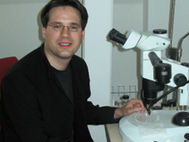
A treasure trove of fossils in amber
Millipedes (Diplopoda) are an important fossil group of land arthropods in the Palaeozoic. However, there is a gap in the Mesozoic, with only slightly more than a dozen fossils being known, until the much more recent fossil records mainly from Cenozoic Dominican and Baltic ambers become available. Burmese amber, precisely dated to the Late Cretaceous, is known for an apparently rich but still undescribed millipede fauna, and might represent the ideal bridge to close this gap in the millipede fossil record. In addition, modern micro-computed tomography (μCT) technology allows complex 3D reconstructions of objects fossilized in amber. Here we utilize μCT technology to describe the first millipedes from Burmese amber, which are also the first two fossil representatives of the order Siphoniulida. Siphoniulida, with two known species and just nine recorded specimens, are the rarest and least known of the 16 extant orders of the Diplopoda. Records are known from Sumatra, Guatemala and Mexico. The two new fossils described here represent two distinct species, Siphoniulus muelleri sp. nov. and S. preciosus sp. nov., and indicate a wider distribution of this order in the Cretaceous. The holotype of S. muelleri sp. nov. was well-enough preserved so that characters of the head, such as the incisura lateralis, not investigated before in extant representatives of the order, could be studied. This study highlights the possibilities and challenges provided by μCT technology in investigating Diplopoda fossilized in amber.






